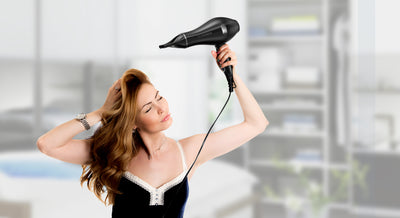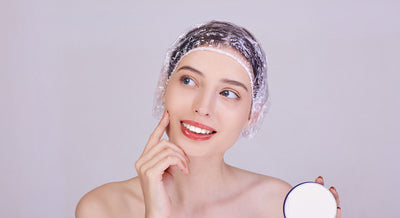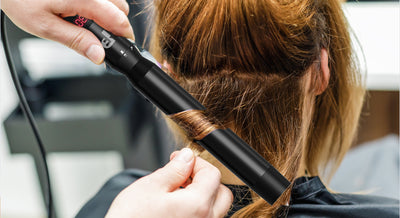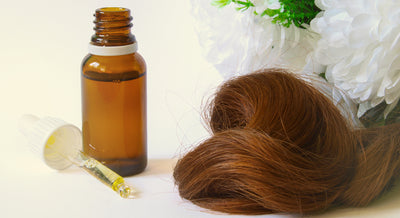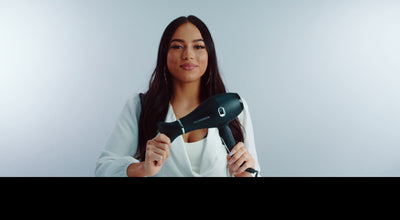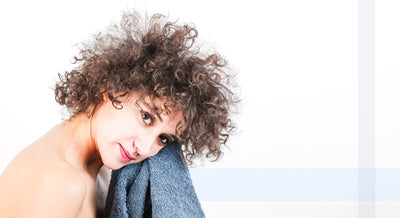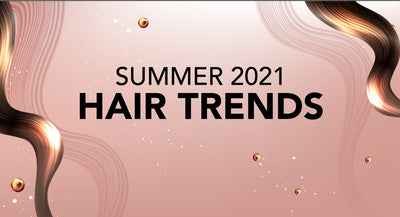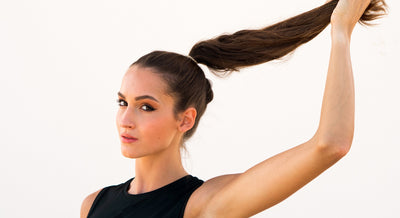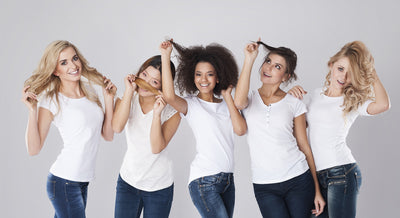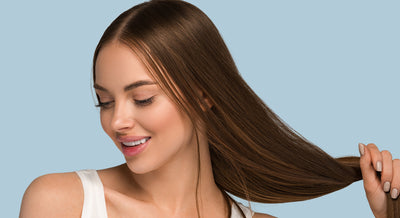Having thick hair can be a double-edged sword. One hand, thick hair is undeniably gorgeous, with a density and body that most other hair types can only dream of.
On the other hand, thick hair is by far the toughest hair type to maintain. With more hair comes more problems, and it can be tricky to try and manage thick hair on a daily basis.
For instance, thicker hair types need to take extra care when brushing, as too strong of a comb will easily tangle thick hair, while too soft of a brush will do little to nothing in terms of detangling and straightening.
Of all the difficult aspects of managing thick hair, perhaps no area of hair maintenance is more difficult than the drying process. Because of all that thick hair, it takes significantly longer to blow-dry the hair completely. Unfortunately, with all that extra time exposed to heat comes an increased risk for dryness and damage, meaning that by the time your hair is dry, you’re suddenly dealing with a massive head full of frizz.
While there are numerous blow-dryers on the market designed to specifically limit damage and dryness, there are numerous other cost-effective methods to dry thick hair while maintaining moisture levels. Read below for our no-blow-dryer hair drying guide!
Microfiber Towel
Picture this: you finish showering, you open the shower door/curtain, and you grab your towel. For most of us, our first impulse after drying our body is to use the towel to dry off our hair. However, using a conventional cotton terry towel to dry off wet hair can be potentially damaging to thick or textured hair. You see, the hair is at its weakest, most fragile state when wet, which is why you should never (or almost never) brush your hair when it is sopping wet. When you rub a thick, coarse towel on your wet hair, you’re putting your hair at tremendous risk for causing breakage and split ends.
The answer? Microfiber! Microfiber towels are designed to not only be exceptionally soft and gentle, but they also are significantly more absorbent than cotton, helping to drastically speed up drying time. After showering, use a microfiber to gently yet rapidly dry your hair and say goodbye to post towel-drying frizz!
Hair Braids
This method utilizes a 2-in-1 approach, as it combines the gentle drying benefits of air-drying with the unique styling benefits of hair braiding! While your hair is wet, braid your hair into loose or tight patterns and allow it to air-dry naturally. When dried, undo the braids and discover a beautiful, long-lasting curly or wavy hairstyle without using any sort of styling device! Loose braids are perfect for wavy, big hair styles, while tight braids are excellent for crafting defined, bouncy curls.
To make things interesting, try out all kinds of braiding patterns. French braids are common, but another option is to use hair pins to really hold the curls in place while drying. Another option is tying your hair in buns, whether a top bun or as two fun space buns. This is a method to play around with and get creative!
Wide Tooth Comb
While we mentioned that brushing your hair while wet is a major no-no, we are making an exception for this method. A strong, wide-tooth comb is the perfect tool to detangle and separate thick hair when wet without snagging or causing any breakage. This is a perfect brush to use on wet hair when trying to distribute a leave-in conditioner from the root to the tips, as well as a great tool for a quick, casual detangling method.
For the purposes of accelerating the hair drying process, slowly and gently brushing the wet hair with a wide-tooth comb is an excellent way to promote airflow, which in turn facilitates faster drying. Hair that is tangled or bundled up takes longer to dry and using a wide-tooth comb is an excellent way to both dry and detangle the hair in one process!
Apply a Leave-In Conditioner
While you air-dry your hair, why not maximize this time, and apply a leave-in conditioner? A leave-in conditioner is an incredible product for enhancing hair moisture levels for long-lasting hydration, as the conditioner isn’t rinsed out like normal conditioner. As mentioned previously, you can apply a leave-in conditioner to wet or damp hair directly at the roots and then use a wide-tooth comb to distribute the product form the roots to the tips. Allow the hair to air-dry as usual for a frizz-free, ultra-shiny finish!
For thick hair types, this method is extra important to further bolster the health of your hair to prevent damage and dryness. A leave-in conditioner is also a fantastic way to seal the outer cuticle layer, which both preserves moisture levels while also preventing dullness and frizz. Thicker hair types should opt for an extra-rich leave-in conditioner with ingredients like coconut oil and shea butter for long-lasting, reparative moisture.
Silk Pillowcase
While this technically isn’t a method of drying, a silk pillowcase is an essential item for anyone who showers and air-dries their hair before bed. Silk is a naturally anti-microbial material, which is ideal for anyone going to bed with wet or damp hair. You see, when wet hair is pressed against a pillowcase for an entire night, it creates the kind of moist, warm environment that fungus and bacteria thrive in, leading to conditions like dandruff and eczema. With a silk pillowcase, you can sleep easy without any worry of nasty fungi or bacteria! Additionally, silk pillowcases are much smoother and softer than cotton, providing a perfect surface for the hair to rest against at night to prevent any breakage while tossing and turning!


